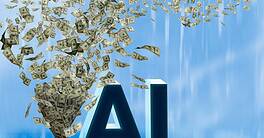Amazon Editorial reviews
- Product Description
- A beloved classic comes to life with this beautifully illustrated annotated edition on the 100th anniversary of Oz. The Wonderful Wizard of Oz is the quintessential American fairy tale, but also one of the most controversial children’s books ever published. Michael Patrick Hearn, the world’s leading Oz scholar, provides a spellbinding annotated edition that illuminates all of Oz’s numerous contemporary references, provides fascinating character sources, and explains the actual meaning of the word “Oz.” A facsimile of the rare 1900 first edition appears with the original drawings by W. W. Denslow–scrupulously reproduced to mimic their correct colors, using a different color for each region of Oz–as well as twenty-five previously unpublished illustrations. In addition, Hearn provides an extensive bibliography, compiling Baum’s published work, every notable Oz edition, and the stage and motion-picture productions from 1939’s The Wizard of Oz to the 1974 Broadway smash The Wiz. The result is a classic to rival Baum’s own, and a book no family’s library can do without. 90 black-and-white, 56 color, and two-color illustrations throughout.
- Amazon.com Review
- An updated version of the definitive guide, The Annotated Wizard of Oz provides a facsimile color version of the first edition of L. Frank Baum’s children’s classic along with extensive notes and a thorough history of the immense Oz project. In his excellent introduction, Michael Patrick Hearn describes the author’s early life and interests and the development of his collaboration with W.W. Denslow, the original illustrator for his books.
An energetic and excitable fellow, Baum’s devotion to make-believe began in his early 20s, when he joined a small touring theatrical troupe on the East Coast. Later attempts to run a general store and a newspaper in South Dakota (then the Wild West) failed miserably. Although few of his business ventures or artistic efforts had met with success, in 1897 Baum’s “Father Goose” rhymes (designed and illustrated by Denslow) became a surprise bestseller, and Baum was able to buy his family a summer cottage on Lake Michigan, christened “The Sign of the Goose,” for which he made most of the furniture (goose-themed, of course) and stenciled the walls with a frieze of green geese.
The idea for The Wonderful Wizard of Oz, “a modern fairy tale,” as he considered it, soon followed, and the book appeared in May 1900. The 10,000-copy first printing sold out in two weeks, and about 90,000 sold within the first year. Hearn goes on to describe the many books that followed, as well as the 1902 musical extravaganza The Wizard of Oz and Baum’s subsequent, ill-starred attempts to depict the world of Oz on film. (He died long before the 1939 MGM musical made his fairy tale known around the globe.) In 1907, he told a reporter for the Grand Rapids Herald why he preferred young readers:
To write fairy stories for children, to amuse them, to divert restless children, sick children, to keep them out of mischief on rainy days, seems of greater importance than to write grown-up novels. Few of the popular novels last the year out, responding as they do to a certain psychological demand, characteristic of the time; whereas, a child’s book is, comparatively speaking, the same always, since children are always the same kind of folks with the same needs to be satisfied.
Hearn has gone to great lengths in his notes to this facsimile of The Wonderful Wizard of Oz, often referring to subsequent volumes in the series, slowly building a key to the rules and history of Oz, pointing out inconsistencies as well as hints to Baum’s literary sources (such as Bunyan’s Pilgrim’s Progress), and providing, among other delights, a mini-treatise on malevolent vegetation in Oz. This is an essential volume for the Oz aficionado or the student of children’s literature, and a wonderful resource for parents of young readers. –Regina Marler



